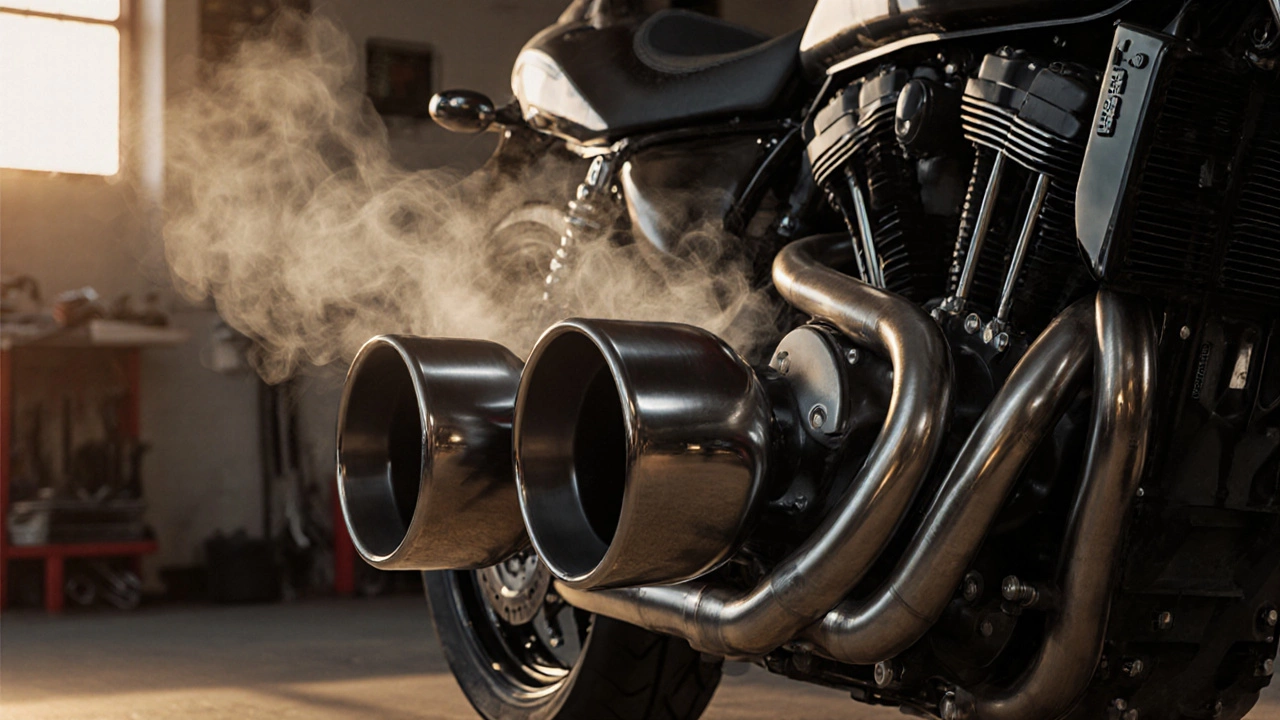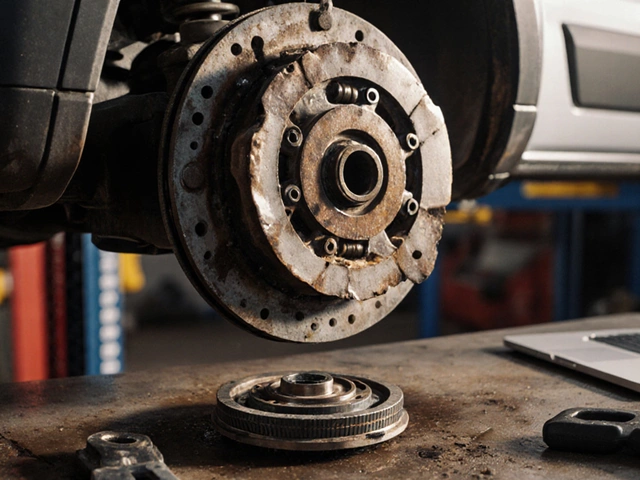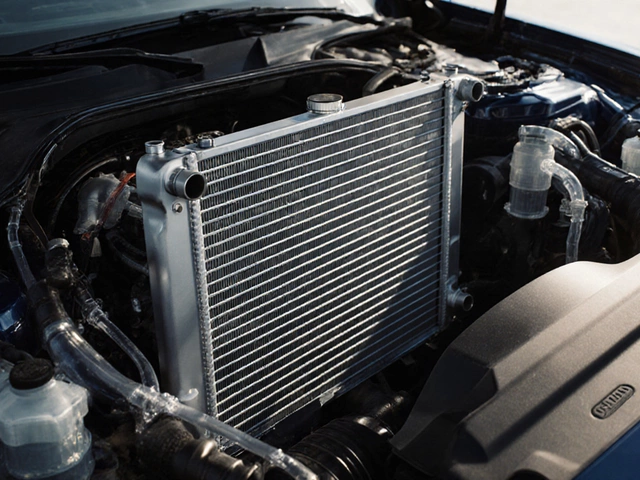
Exhaust Modification Power Calculator
Vehicle Information
Ever seen a bike or car with a single, thick exhaust pipe where there used to be two, and thought, "That must make it faster?" It’s a common sight-especially on motorcycles-and the promise is simple: swap your dual pipes for a 2 into 1 exhaust, and you’ll pick up horsepower. But does it really? The short answer? Sometimes. But not because of magic. It’s all about how exhaust gases move, how backpressure works, and whether your engine actually likes the change.
What is a 2 into 1 exhaust?
A 2 into 1 exhaust system takes the exhaust pipes from two cylinders and merges them into one single pipe before they reach the muffler. It’s a popular upgrade on V-twin motorcycles, older American cruisers, and some performance cars with twin exhausts. The goal? Reduce weight, clean up the look, and-according to sellers-boost power.
But here’s the thing: engines don’t care how many pipes you have. They care about how easily exhaust gases escape. Every time exhaust gas pushes out of the cylinder, it creates pressure. If that pressure can’t flow out smoothly, it fights against the next piston stroke. That’s called backpressure. Too much of it kills power. Too little? That can hurt torque.
How exhaust flow affects horsepower
Engineers spend years tuning exhaust systems-not just for sound, but for efficiency. A well-designed system uses pulse tuning: the timing of exhaust pulses from each cylinder helps pull the next batch of gas out. Think of it like a crowd exiting a stadium through two doors that merge into one hallway. If the hallway is too narrow, people jam up. If it’s just right, they flow smoothly.
In a 2 into 1 setup, the merge point matters. A poorly designed merge can cause pulses to collide, creating pressure waves that bounce back into the engine. That’s the opposite of what you want. But a good merge? It can actually help scavenge exhaust gases faster, letting fresh air-fuel mix in more efficiently. That’s where you might see a small power gain.
Real-world horsepower gains: numbers don’t lie
Let’s cut through the hype. Most dyno tests on popular motorcycles like the Harley-Davidson Sportster or Honda Shadow show a 2 into 1 exhaust adds between 2 to 6 horsepower at the rear wheel-if it’s paired with a proper tune. That’s not nothing, but it’s not a game-changer either. You’re not turning a 60hp bike into an 80hp beast.
And here’s the catch: those gains only happen if you also adjust the fuel delivery. Stock engines are tuned for the original exhaust. Swap the pipes, and the air-fuel ratio gets thrown off. You might run lean, which can overheat the engine-or rich, which just makes it sluggish. Without a fuel controller or remap, you’re likely to lose power, not gain it.
On cars, the numbers are even smaller. A 2 into 1 exhaust on a 4-cylinder engine often does nothing-or hurts low-end torque. Most street cars are optimized for emissions and noise, not peak power. The gains only show up at high RPMs, where most drivers rarely operate.

When a 2 into 1 exhaust actually helps
There are two scenarios where this mod makes real sense:
- You’re running a high-performance engine with custom heads, camshafts, or forced induction. In these cases, the engine moves more air and needs a freer-flowing exhaust to keep up. A 2 into 1 with large-diameter piping and a tuned merge can help extract more power.
- You’re building a race bike or track car and need to reduce weight and drag. Every pound saved matters, and a single pipe is lighter than two. The horsepower gain might be small, but the overall package improves.
On a stock commuter bike or daily driver? You’re better off spending your money on a good air filter or a proper tune. Those will give you more consistent gains.
The downsides you can’t ignore
Before you drop cash on a 2 into 1 system, consider the trade-offs:
- Loss of low-end torque: Many riders notice the bike feels weaker off the line. That’s because the exhaust pulses aren’t tuned for low RPM scavenging.
- Louder and harsher sound: Single pipes often sound tinny or raspy, not deep and throaty like a good dual system. Some find it annoying.
- Heat concentration: One pipe means all the heat from both cylinders flows through one area. That can bake nearby components or even melt plastic parts on some bikes.
- Legal issues: In the UK and EU, exhaust modifications must meet noise and emissions standards. Many 2 into 1 systems aren’t road legal without a certified catalytic converter and proper labeling.
I’ve seen bikes in Bristol with aftermarket 2 into 1s that failed their MOT because the exhaust noise exceeded 96dB. The inspector didn’t care how much horsepower it added. He just saw the decibel reading.

What you need to make it work
If you’re serious about trying a 2 into 1 exhaust, don’t just bolt it on and ride. Here’s what you actually need:
- A fuel controller (like a Power Commander or TuneECU) to adjust air-fuel mixture.
- A proper dyno tune-not just a generic map. Every engine is different.
- A high-quality system with a tuned merge collector. Cheap kits often have bad geometry.
- A catalytic converter if you want to stay road legal in the UK.
Skipping any of these steps means you’re gambling with your engine’s health and your wallet.
Alternatives that deliver more bang for your buck
If you want real horsepower gains without the headaches, consider these instead:
- High-flow air filter: Adds 1-3hp, costs under £50, and is 100% legal.
- ECU remap: Especially on modern bikes, a proper tune can unlock 5-10hp across the rev range.
- Performance headers: Designed with equal-length runners and tuned lengths for better scavenging. Better than a basic 2 into 1.
- Lightweight wheels: Reduces rotational mass. Feels faster than any exhaust mod.
These mods work together. A good tune + air filter + exhaust gives you more than any single upgrade alone.
Final verdict: Is it worth it?
A 2 into 1 exhaust doesn’t magically add horsepower. It might add a few, but only if it’s well-designed, properly tuned, and matched to your engine’s needs. For most riders and drivers, the gains are too small to justify the cost, the noise, the heat, or the risk of failing an MOT.
Unless you’re building a race machine or you’re chasing that specific look and sound, skip it. Focus on tuning, airflow, and weight reduction instead. Those are the real levers for power.
And if you do go ahead? Don’t forget the tune. You’ll thank yourself later.
Does a 2 into 1 exhaust increase horsepower on all vehicles?
No. It only adds noticeable horsepower on engines that are already modified to flow more air-like those with performance cams, high-flow heads, or forced induction. On stock engines, it often reduces low-end torque and requires a fuel tune to avoid running lean. Without tuning, you might lose power.
Why do some people say their 2 into 1 exhaust made their bike faster?
They’re likely feeling the reduction in weight and the change in sound, not actual horsepower gains. A lighter exhaust makes the bike feel more responsive. The deeper tone can also trick your brain into thinking it’s more powerful. Real gains require a dyno test-and even then, they’re usually under 6hp.
Is a 2 into 1 exhaust legal in the UK?
It depends. If the system includes a certified catalytic converter, meets noise limits (under 96dB for motorcycles), and doesn’t remove emissions controls, it can pass an MOT. Many aftermarket 2 into 1 systems are not road legal. Always check for E-marking or UKCA certification before buying.
Do I need to remap my ECU after installing a 2 into 1 exhaust?
Yes, almost always. Stock ECUs are calibrated for the original exhaust’s backpressure and flow characteristics. A free-flowing 2 into 1 changes how the engine breathes, which throws off the air-fuel ratio. Without a remap or fuel controller, you risk engine damage from lean conditions or poor performance from rich mixtures.
Can a 2 into 1 exhaust damage my engine?
Potentially, yes-if it’s poorly designed or installed without tuning. Lean air-fuel mixtures from unmapped exhausts can cause overheating, melted valves, or piston damage. Heat buildup from a single pipe can also warp nearby components. Always pair the exhaust with proper tuning and check for heat shields.
What’s better: a 2 into 1 or a dual exhaust?
It depends on your goal. A dual exhaust is better for low-end torque, smoother sound, and heat distribution. A 2 into 1 is lighter and looks cleaner, but often sacrifices low-RPM response. For street use, duals usually perform better. For racing or weight savings, a tuned 2 into 1 can be advantageous.





